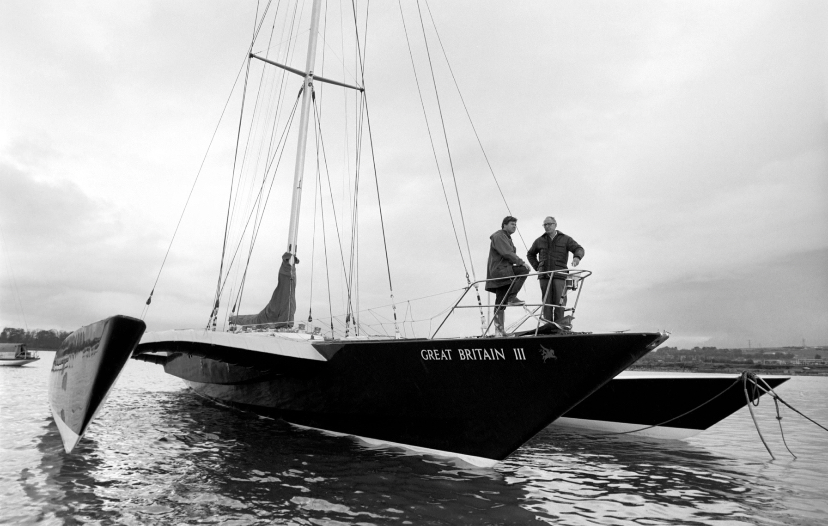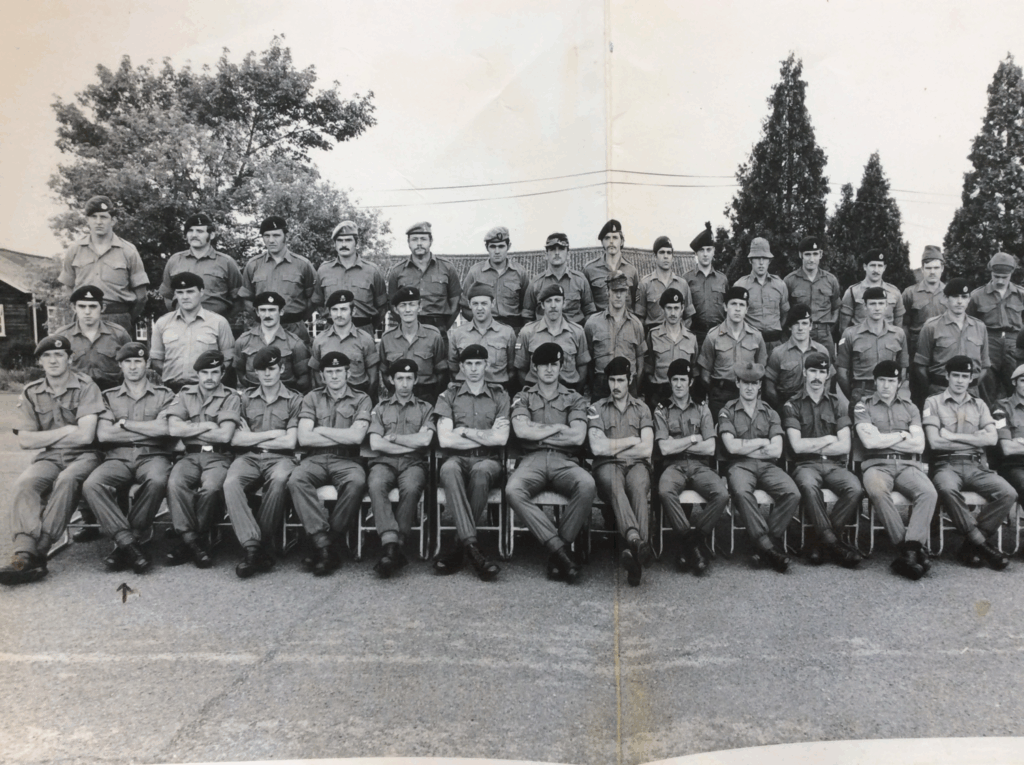
This is a moto of the Special Air Service Regiment. Now I very rarely if ever mention my time serving in the SAS, why? Because I have always felt it’s a personal thing. When I did serve in the SAS in the 1970’s they weren’t that well known as a military unit. It was only after televised storming of the Iranian embassy siege in London it become know worldwide as the UK’s premier military unit.
I was a born to be a natural soldier it was part of my DNA. When I was serving my apprenticeship as a welder fabricator in Wallasey on the banks of the river Mersey. The Royal Marine Reserves were advertising for recruits. 46 Royal Marine commando was the equivalent of the territorial army. Part time soldiers. There were two phases the square bashing spit and Polish phase and the commando training and selection at Commando Training School at Lympston on the shores of the river Exe.
At Eastney Barracks at Southsea near Portsmouth we did a two week drill and physical exercise phase. I won the best recruit on the drill and rifle range. There was a write up in my local paper the Wallasey news. I went on to pass Commando training and was awarded the converted Green beret of the Royal Marine Commandos.
I went to Royal Airforce Abingdon and did the basic static line military parachute course and was awarded my parachute wings. I loved being in the Royal Marine Commandos reserves. It was the comradeship of the lads and the general ethos of being a soldier.

I applied to join the regular Royal Marine commandos was rejected because I have a slight colour perception problem. CP3 is in the context of colour perception, CP3 refers to a level of colour vision where an individual can distinguish red, green, and white, but may struggle with more subtle color distinctions.
Being a Royal Marine Commando regular service some times you’re involved in sea service and for navigation Red & green are ships identification for port and starboard. Strange thing as I’m a serious offshore solo sailor it’s not ever been an issue. Big ships have mast lights the stern one is higher than the bow light. They’re always white lights. Yes it can be little harder to see the red and the green but I am able to identify them if a squint my eyes. Now I have AIS automated Identification of ships that’s made identification much easier.
What happened afterwards, once I was turned down by the regular Royal Marine Commandos, I applied to join the British army. I decided to join the corps of Royal Engineers. Utilise my welding skills as well as being a soldier. I was sent to Number 1 Training School RE. Number 1 training regiment was a large old wooden huted Canadian built Second World War camp in Cove outside of Farnborough Hampshire.
This was in two phases basic training drill, skill at arms and physical training. Mostly square bashing to turn us into a discipline force of men! I won all the awards best drill best skill arms. Second phase was combat engineer training. I also was room senior meaning I was responsible for the guy’s in my large barrack room. After gaining my parachute wings at RAF Abingdon with the RMR I was determined to do P Coy or parachute selection company to achieve the converted Maroon para’s beret.
Once we finished basic Royal Engineer training I was posted to 9 Independent Parachute Squadron Royal Engineers a support unit with in 16 Independent Parachute Brigade. This included many other units to support the parachute regiments who were the infantry of airborne forces.
The selection process was extremely hard culminating in large week exercise over the South Wales Brecon Beacons. Finally with the gut wrenching stretcher race around the bottom of Pen Y Fan.
Getting back to the Depot Parachute barracks in Aldershot we had the passing out parade. Dressed in our number 1 best uniform we sat in front of the parachute regiment selection staff. OC Office Commanding was in front of all the course participants. We were sat down your name was shouted out by the OC you stood up to attention and he said to me Sapper Downie pass. Phew you sat back down and thought I’ve passed P Coy! At the end the OC said we’d like to present Sapper Downie the best all round performance of December 1972 P Coy course. Wow I was in shock and started to cry with disbelieve! What an achievement!
That’s how I got into sailing when it was announced on orders the round the world yacht man and ex parachute regiment paratrooper was looking for second round the world crew for his new Trimaran Great Britain 111. I passed the selection process and became part of the crew. Unfortunately the race was cancelled and my sailing days came to an end.

9 Independent Parachute Royal Engineers was a great conduit for the Special Air Service. At Hereford where the SAS is based they use to call lads from 9 Squadron as shiny 9. Many recruits from such small unit were successful in passing SAS selection and continuation training. The SAS has two yearly selections processes one in February and one on Summer in July. Most military units such as the parachute regiment, Royal Marines and other army units such as the infantry don’t really like losing their best soldiers to the SAS. You’re never permanently with the SAS. They do have permanent carder meaning soldiers who are normally senior ranks who are with the SAS on a full time basis.

Yes recruits from all other military units who pass the physical and military continuation training are badged meaning they wear the Sandy brown beret and the winged dagger cape badge which is made of cloth. SAS physical selection takes 4 weeks. Many recruits have take leave time to do the selection process. Second phase continuation Training takes about 16 weeks or so!

At the beginning it’s about map reading using an ordnance survey map and silva compass. This was way before GPS electronic systems. Test week were long distances marches or TAB’s Tactical Assault to Battle carrying a rifle belt kit and Bergen back pack. The PSI’s or SAS permanent staff instructors weighed your back packs before and at the various checking points along the March over the Brecon Beacons and other location in Mid wales. The packs got heavy and heavy. Various marches such as pipe line, sketch map and finally endurance. That took you about 20 hours. Each march had specific check points and the staff would give you your next grid reference and weigh you Bergen. You weren’t allowed to write down the grid reference or mark your map.
There were cut off times for each march if you missed a check point or missed the cut off time you failed the course. Many guys couldn’t hack it and fell out over the four weeks, many couldn’t complete the marches in the prescribed time. At the end of the course it dwindled down to a few soldiers. Most gave up because it got too hard. They said it was like walking to top of Mount Everest and back!
After selection it was continuation training. The SAS took you back to basics with skill at arms, foreign weapons such as armalite AR 16, colt commando, Ingram M10, Kalashnikov, Belgium FN. I think we might have fired the German Schmeisser submachine gun.
Later on we were trained on the Heckler & Koch MP5 submachine gun. Superb close quarter automatic assault weapon. Support weapon being 9mm browning with an extended magazine.
Live firing, night patrolling setting up observation posts, combat survival over Black mountains, interrogation, living off the land, culmination in jungle training.
SAS recruits could go through all the continuation phases and fail jungle training. The PSI’s were constantly watching the guys regarding general attitude resilience etc.
One of main features or self discipline aspects was the RTU or returned to your parent unit. If you messed up on operations, or general self discipline was lacking such as performing drunk down town in Hereford you’d be gone as quick as a flash. SAS soldier is an intelligent hardy tough men who can work equally well on his own or in small team remotely any where in the world!
I met an Irish girl whilst serving in Ireland that made me completely change my life and career in the military rightly or wrongly. It’s always easy to think about life in retrospect.
What did my career in the army teach me? Discipline and professionalism. How to approach things in life in a professional manner. Be it scuba diving, offshore sailing or climbing mountains there’s the right and wrong way to go about everything you do in life. SAS soldier always goes that one step further. Being self reliant and following and pursuing one dreams. I’ve always thought visualisation is important you dream and plan what you want to achieve and turn that dream into reality! It’s a powerful technique!
In fact this has helped me throughout my life. I guess what underpinned me being a soldier was the opportunities to travel and see the world. This is still an important part of my life. I love travel and love adventure. Yes it has down side living rather a nomadic existence. Having to spend long periods on one’s own. I am single and find it hard due to my lifestyle to find roots. I guess I don’t want to live a normal life. Not yet anyway! Not until I’m completely old and decrepit!
Finally I don’t believe in war or civil strive it pains me to see what is happening in any war torn land. Especially Ukraine, Palestine and Israel not forgetting Sudan. War is a terrible waste of human life. Why can’t we all live in peace and harmony, I ask myself. It pains to see all the money spent on machines that extinguish life. However there are occasions we need to take up arms for self preservation of our individual self and our nation. Exactly what Ukraine is having to do today against the military invasion of Russia. Who are trying to exterminate Ukraine’s cultural roots and people! They have no choice but to fight such an evil deadly enemy!